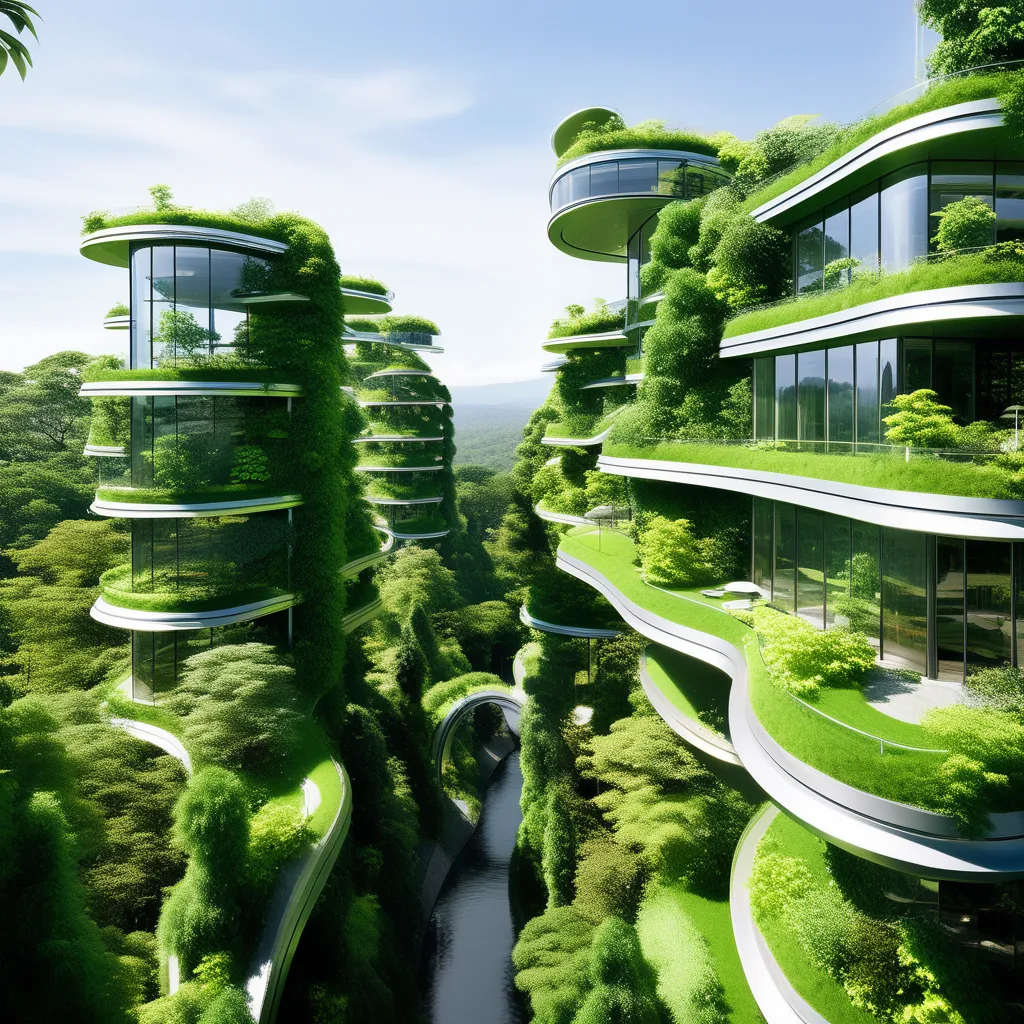Green Architecture: Designing Sustainable Buildings
Entering the world of green architecture is like stepping into a realm where innovation meets environmental responsibility. My journey into understanding sustainable building practices has been a fascinating exploration of design choices that not only create visually stunning structures but also contribute to a healthier planet. Let's delve into the realm of green architecture, exploring key concepts and personal anecdotes that highlight the importance of designing buildings with sustainability at the forefront.

The Evolution of Green Architecture
From Niche to Necessity
Green architecture has evolved from a niche concept to a necessity in the face of environmental challenges. Witnessing this shift prompted my curiosity about the driving forces behind the growing emphasis on sustainability in architectural design. As conversations around climate change intensified, the need for more environmentally conscious buildings became increasingly evident.
Energy Efficiency as a Cornerstone
Lessons from the Passive House
One of the key lessons from the world of green architecture is the emphasis on energy efficiency. Personal experiences visiting a Passive House—a standard for energy efficiency—underscored the impact of meticulous design in reducing energy consumption. The building acted as a living example of how thoughtful architecture can significantly decrease the environmental footprint.
Harnessing Renewable Energy Sources
The Power of Solar Panels
Green architecture often integrates renewable energy sources, with solar panels taking center stage. My encounter with a building adorned with solar panels not only impressed me aesthetically but also demonstrated the practicality of harnessing the sun's energy for powering structures. It sparked a realization of the potential of incorporating renewable energy solutions into mainstream architectural practices.
Sustainable Materials: A Palette for the Future
Bamboo, Cork, and Recycled Delights
Exploring sustainable materials in green architecture feels like discovering a palette of possibilities. From bamboo to cork, the range of eco-friendly options is expanding. Personal anecdotes of walking through spaces adorned with recycled materials highlighted the creative use of resources while minimizing environmental impact. The concept of upcycling in architecture adds an intriguing layer to the design process.
Harmonizing with Nature: Biophilic Design
Bringing the Outdoors In
Biophilic design, a concept close to my heart, emphasizes the connection between humans and nature. Experiencing spaces where nature seamlessly blends with architecture, be it through green walls or strategically placed windows, evoked a sense of tranquility. The integration of natural elements not only enhances aesthetics but also contributes to the well-being of occupants.
Water Conservation: Beyond the Basics
Rainwater Harvesting and Greywater Systems
Green architecture goes beyond energy considerations to address water conservation. An encounter with a building equipped with rainwater harvesting and greywater systems illuminated the potential for sustainable water practices. The realization that buildings could actively contribute to water conservation initiatives left a lasting impression on the importance of holistic sustainability.
Adapting to Climate: Resilient Design
A Lesson from Eco-Friendly Homes
Climate change necessitates resilient design strategies. Personal experiences exploring eco-friendly homes in varying climates highlighted the adaptability of green architecture. From passive cooling techniques to designs that maximize natural ventilation, the ability to tailor structures to their specific environments stood out as a key principle in sustainable design.
Community-Centric Design
Beyond Walls: Designing for People
Green architecture extends its impact beyond the individual building to the community it serves. Engaging with spaces designed with community needs in mind showcased the transformative power of architecture. Public spaces that encourage social interaction and prioritize accessibility contribute to building not just structures but thriving communities.
The Economic Case for Sustainability
Long-Term Savings and Value
Contrary to a common misconception, green architecture makes economic sense in the long run. Personal anecdotes of learning about the life cycle cost analysis of sustainable buildings highlighted the financial benefits over time. While upfront costs may be marginally higher, the investment pays off through energy savings, reduced maintenance, and increased property value.

Conclusion: Building a Greener Tomorrow
As I navigate the world of green architecture, it becomes evident that sustainable design is not just a trend; it's a fundamental shift in how we approach the built environment. From energy efficiency to community-centric design, the principles of green architecture offer a blueprint for building a greener tomorrow. Embracing sustainable practices in architectural design is not just about constructing buildings; it's about shaping a future where our structures harmonize with the environment, fostering a balance between human needs and planetary well-being.

No comments:
Post a Comment